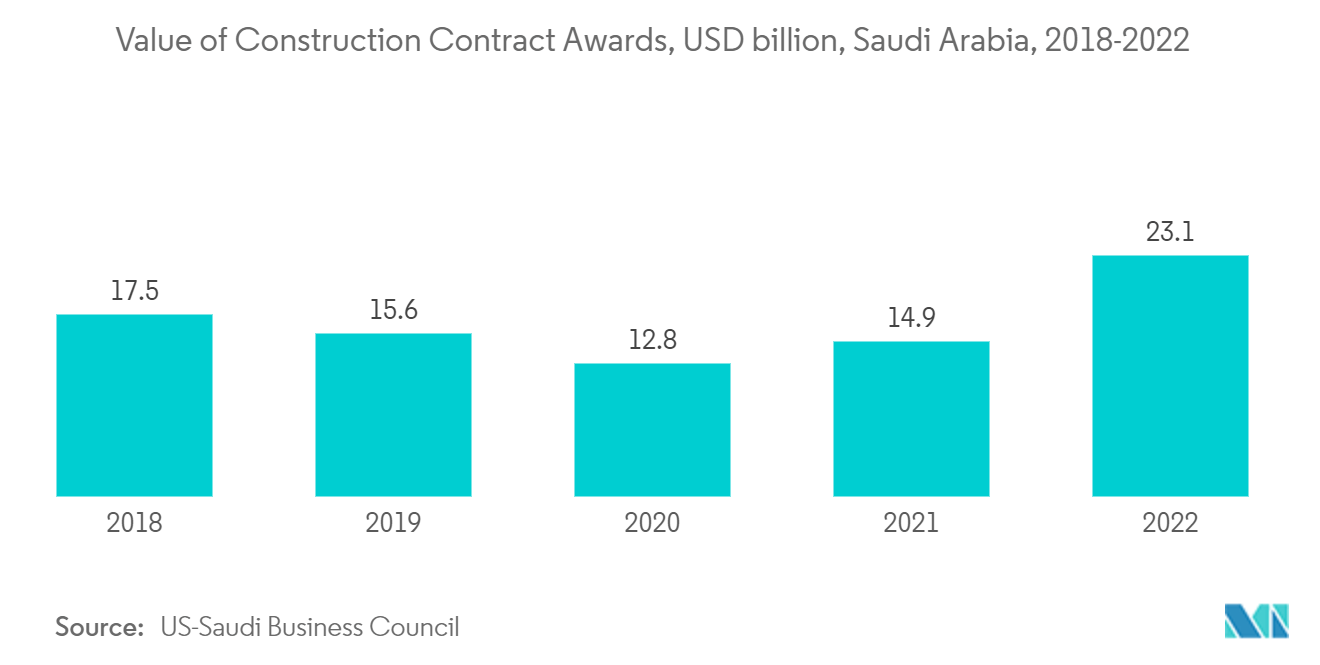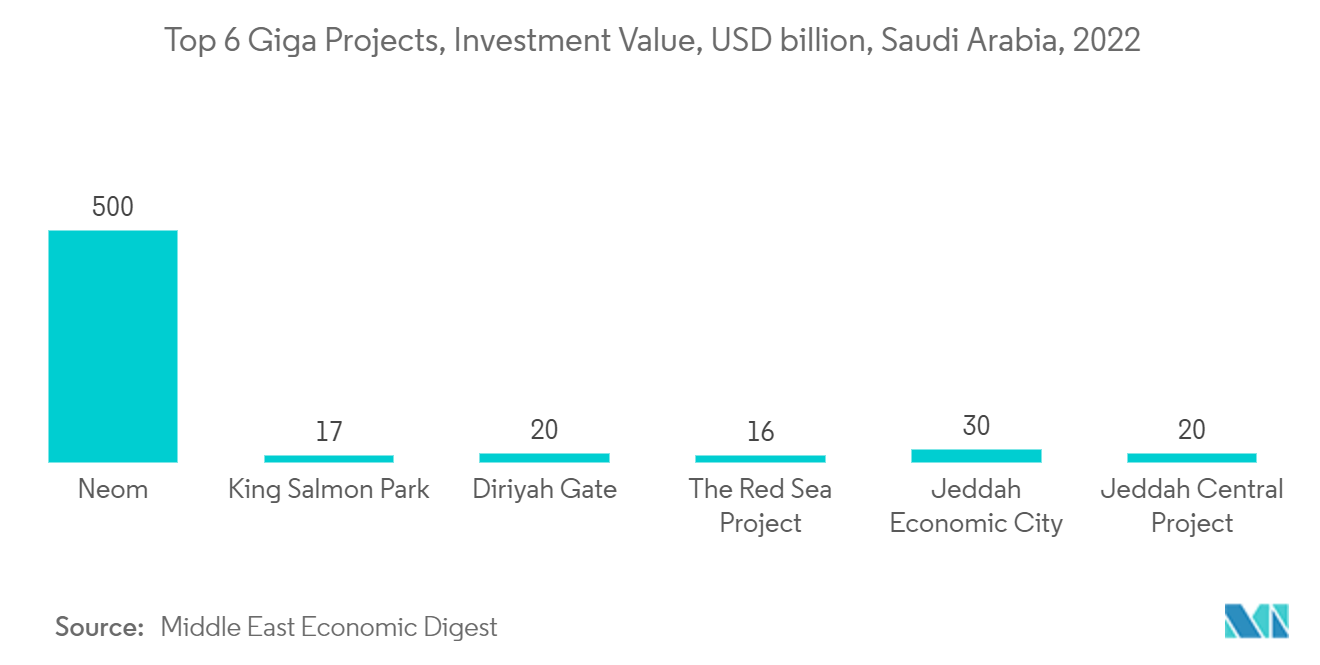Market Trends of GCC Green Cement Industry
Residential Construction to Dominate the Market
- Green cement is gaining traction for the construction of green buildings as it is eco-friendly, consumes industrial waste, reduces carbon dioxide emissions, and requires less energy for production.
- In addition, green cement is highly durable and long-lasting and exhibits excellent strength, durability, resilience, crack resistance, high corrosion resistance, and low chloride permeability.
- The Middle East has a huge scope of economic and social development through adopting green buildings and is not limited to environmental benefits. Reduced energy consumption, reduced emissions, improved water conservation and management, temperature moderation, and reduced waste will all help lower construction costs.
- Countries like Qatar and UAE have come up with their own green building rating system to include socio-economic, environmental, and cultural aspects in modern architecture. Sustainability is a topic of utmost importance in the region. Qatar’s Global Sustainability Assessment System (GSAS) and Abu Dhabi’s Pearl Rating System (PRS) are some of the most comprehensive green building rating systems in the world.
- The United Arab Emirates has a lot of residential construction plans underway, primarily due to the growing migration of people to the country for business opportunities. The United Arab Emirates has become a business hub over the last decade, creating a demand for residential construction. Some of the major projects in the country include:
- Tilal Al Ghaf (D4) is expected to be built across an area of 3 million square meters. The project will be constructed in phases and is scheduled for completion in 2027. It is expected to have over 65,000 homes of mid to upper luxury.
- Al Riyadh City in Abu Dhabi is another major construction project spanning 8,000 hectares and is to be the largest in the emirate, expected to accommodate 200,000 citizens and occupy 45% of Abu Dhabi’s total residential land area. The construction for the said project is currently in progress.
- The Dubai Creek Harbor project plan includes a retail precinct, walkways, Signature Towers, and the Dubai Creek Residences. The project has a residential capacity of 39,000 homes with more than 8 million square feet of retail space, 3,664 office units, and 22 hotels. The project was scheduled to be completed by 2022, but the COVID-19 pandemic stalled operations.
- The rest of the GCC countries, like Kuwait, Bahrain, and Oman, are also experiencing increased residential demand due to growing population and immigration. Consequently, the demand for green cement is also bound to increase in the forecast period.

Saudi Arabia to Dominate the Regional Market
- The construction industry contributes nearly 6-7% of the total GDP of the country. The Saudi government is focusing on developing education, healthcare, infrastructure, and industrial sectors for economic diversification. This, in turn, is anticipated to increase the demand for the institutional, residential, industrial, and commercial construction segments and likely enhance the demand for green cement.
- The announcement of Vision 2030 and the associated National Transformation Plan (NTP) have increased investments in various sectors, such as healthcare and education, to support the country’s economic growth.
- The government has expansive plans for the development of social infrastructure in the country. The government and private investments in different sectors of the country are expected to lead to a rise in commercial building construction activities in the country.
- Saudi Arabia is amid Vision 2030, a major transformation agenda that is underpinned by megaprojects, such as the tourist destination of the Neom super-city, the 334 km2 entertainment city of Qiddiya, the development at the UNESCO World Heritage site of Al-la, and the luxury and sustainable tourism focused Red Sea Project.
- Additionally, as of July 2023, ROSHN Real Estate, formed by Saudi Arabia’s Public Investment Fund (PIF), plans to spend over USD 12 billion to build integrated communities that will likely provide housing to more than 2.2 million people by 2030.
- The Saudi Arabian construction industry is driven by increased residential property demand and government measures to improve economic infrastructure. The country has been taking steps to promote sustainable construction policy by investing in renewable energy sources and introducing a green building rating system.
- Moreover, research on new raw materials for producing green cement is also in the works in the country. King Abdullah University of Science and Technology has also been working on developing green cement by replacing 45% to 65% of ordinary Portland cement with 30% to 50% Saudi Arabian pozzolan and 15% limestone, which also includes fly ash.
- All these developments are fueling the demand for green cement in Saudi Arabia.


